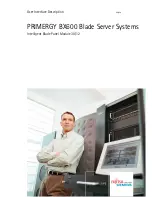
2: Overview
XPort AR User Guide
16
Building Automation equipment
Point of Sale Systems
ATM machines
Data display devices
Modems
Time/attendance clocks and terminals
Protocol Support
The XPort AR device server supports the following TCP/IP protocols:
ARP, IP, UDP, TCP, ICMP, BOOTP, DHCP, Auto IP, Telnet, DNS, FTP, TFTP, HTTP/HTTPS,
SSH, SSL/TLS, SNMP, SMTP, RSS, PPP and Syslog for network communications and
management.
TCP, UDP, TCP/AES, UDP/AES, Telnet, SSH and SSL/TLS for tunneling to the serial port.
TFTP, FTP, and HTTP for firmware upgrades and uploading files.
Evolution OS™
The XPort AR features the Lantronix Evolution OS™. Key features of the Evolution OS™ include:
Built-in Web server for configuration and troubleshooting from Web-based browsers
CLI configurability
SNMP management
XML data transport and configurability
Really Simple Syndication (RSS) information feeds
Enterprise-grade security with SSL and SSH
Comprehensive troubleshooting tools
Software Features
Modem Emulation
In modem emulation mode, the XPort AR can replace dial-up modems. The unit accepts modem
AT commands on the serial port, and then establishes a network connection to the end device,
leveraging network connections and bandwidth to eliminate dedicated modems and phone lines.
Web-Based Configuration and Troubleshooting
Built upon Internet-based standards, the XPort AR enables configuration, management, and
troubleshooting by using a browser-based interface accessible anytime from anywhere. All
configuration and troubleshooting options are available via the web interface. You can access all
functions via a Web browser, for remote access. As a result, you decrease downtime (using the
troubleshooting tools) and implement configuration changes (using the configuration tools).















































